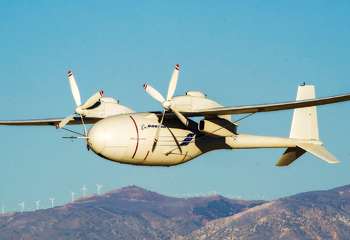INDIAN ARMED FORCES CHIEFS ON OUR RELENTLESS AND FOCUSED PUBLISHING EFFORTS

The insightful articles, inspiring narrations and analytical perspectives presented by the Editorial Team, establish an alluring connect with the reader. My compliments and best wishes to SP Guide Publications.

"Over the past 60 years, the growth of SP Guide Publications has mirrored the rising stature of Indian Navy. Its well-researched and informative magazines on Defence and Aerospace sector have served to shape an educated opinion of our military personnel, policy makers and the public alike. I wish SP's Publication team continued success, fair winds and following seas in all future endeavour!"

Since, its inception in 1964, SP Guide Publications has consistently demonstrated commitment to high-quality journalism in the aerospace and defence sectors, earning a well-deserved reputation as Asia's largest media house in this domain. I wish SP Guide Publications continued success in its pursuit of excellence.
- Indian Air Force Aims for Full Indigenous Inventory by 2047 — Air Chief Marshal A.P. Singh
- General Upendra Dwivedi takes over as the Chief of the Army Staff
- Rajnath Singh assumes charge as Defence Minister for the second consecutive term
- Admiral Dinesh K. Tripathi assumes Command of the Indian Navy as 26th Chief of the Naval Staff
- Prime Minister witnesses 'Bharat Shakti' – a Tri-Services Firing and Manoeuvre Exercise in Pokhran, Rajasthan
Phantom Eye is now "Experimental"

Boeing’s Phantom Eye was promoted to experimental status by the US Air Force 412th Operations Group based on the recommendation of officials at NASA’s Dryden Flight Research Center.
The liquid hydrogen-fuelled, high altitude long endurance (HALE) unmanned aircraft system (UAS) is a prodigy of sorts, having earned experimental status after completing just six successful test flights.
As an experimental aircraft operating within the US Air Force Test Center, it can now depart protected air space over Edwards Air Force Base, California, for a test range several kilometres away to complete its endurance and altitude testing.
“Graduating from unproven to experimental status is crucial to Phantom Eye successfully reaching its testing goals this year, so we can bring this capability to the market,” said Phantom Eye Programme Manager Brad Shaw. “Meeting NASA’s stringent safety criteria in six flights is reflective of their confidence in the Phantom Eye team’s hard work and dedication in maturing our system to this point.”
Phantom Works’ Advanced Boeing Military Aircraft team is preparing for more Phantom Eye test flights in the coming months designed to achieve the programme’s intended goal of more than 60,000 feet (18,288 metres) in altitude, while also increasing endurance with each flight.
The Phantom Eye demonstrator is designed stay airborne longer than any other unmanned HALE aircraft currently in production. Following testing of the demonstrator aircraft, a full-size operational version of Phantom Eye could be built, which is expected to stay airborne for seven to 10 days.
No other system holds the promise of offering on-demand, persistent intelligence, surveillance and reconnaissance (ISR), communications and earth-sensing technology to any region in the world, at a very affordable cost.





